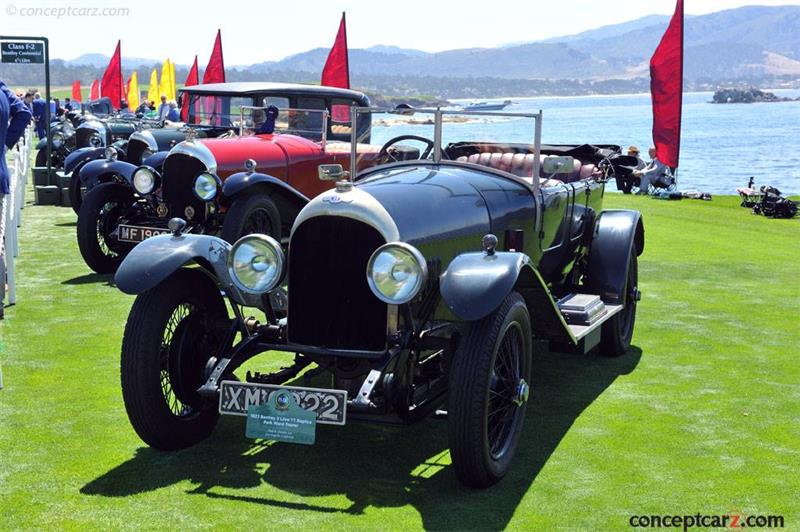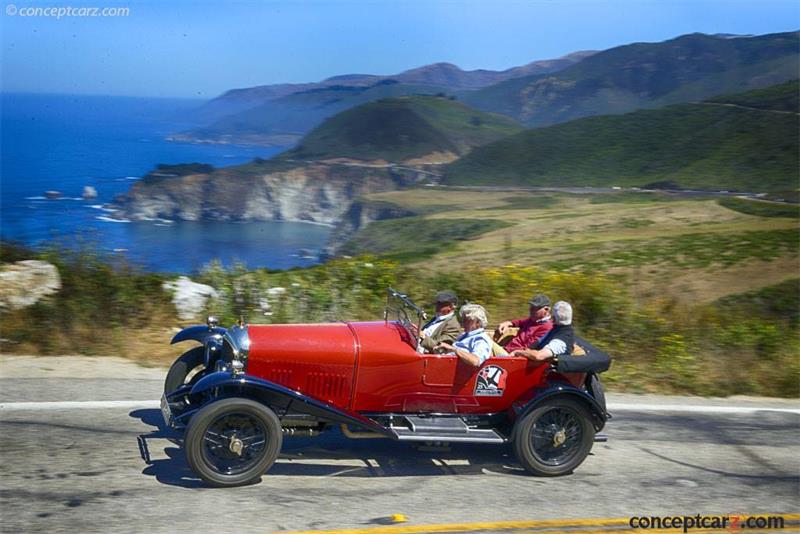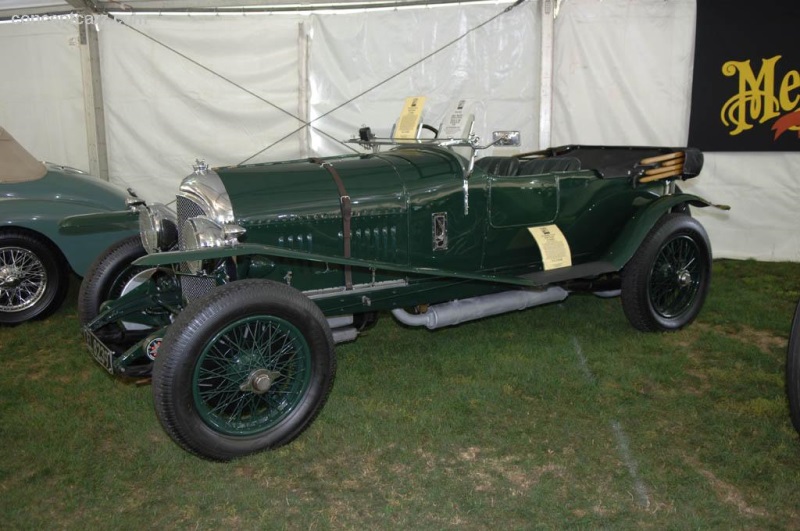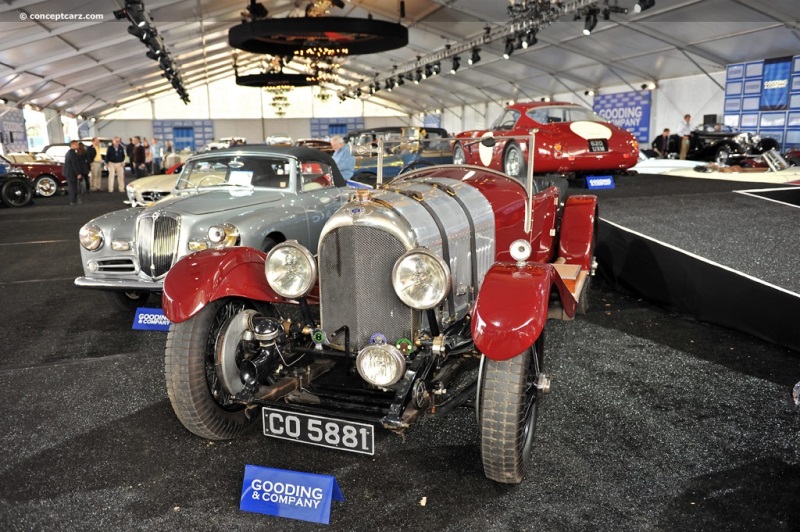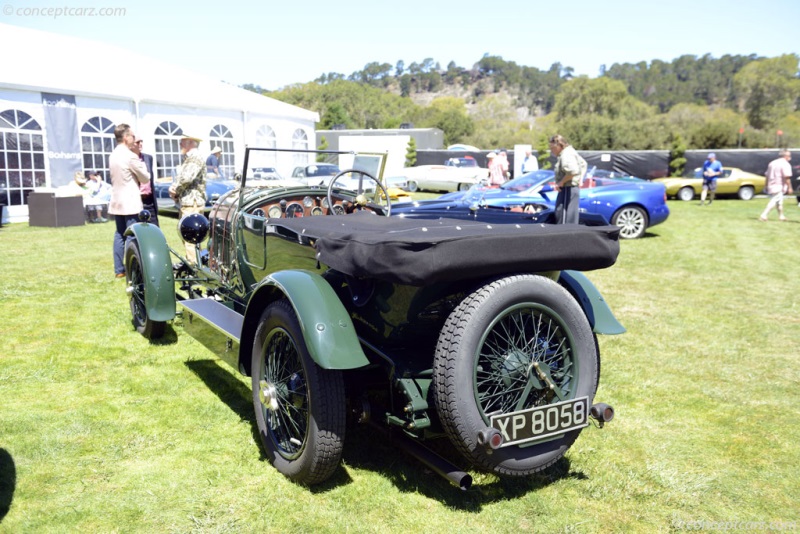History
Walter Owen Bentley, commonly known as 'WO', worked as an apprentice at the Great Northern Railway where he designed airplane engines. The first Bentley automobile was created in London just after the end of World War I, and given a three-liter four-cylinder engine that produced 65 horsepower. It was designed by the company's founder, Walter Owen, and benefited from his technical abilities and skill. This car was the first to carry the flying 'B' insignia and the hallmark radiator casing. An example was shown at the 1919 London Motor Show, though it was void of an engine that was not ready in time.
The 3-liter Bentley would remain in production until 1929 with a total of 1622 examples being produced in various configurations. A total of 513 examples of the Speed Model were created during this time. The 3-Litre Bentley was the car that would give the Bentley Company its fame. The car would emerge victorious at the 1924 24 Hours of LeMans race, which is a true testament to the car's abilities, stamina, technology, ingenuity, and speed. The Bentley's would win LeMans again in 1927, 1928, 1929, and 1930. They competed at various other important races, such as the Tourist Trophy and Brookland's Double 12, where the cars proved they were the fastest.
Under the bonnet was the powerplant, which was a technical marvel and advanced for its time, featuring aluminum pistons, twin spark ignition, and an overhead camshaft that operated four-valves per cylinder. The cylinder block and head were cast as a single piece which prevents leakage from the gaskets. The dry-sump lubrication allowed for increased oil capacity, lower center of gravity for the engine, and reduced energy/power loss.
Various coachbuilders were tasked with creating the bodies; Vanden Plas was one of the popular favorites, as was the LeMans type Bodystyle which closely mimicked the body style of the LeMans racer. During that era, the cars that raced at LeMans were often given bodies of road-going Tourers, at the request of the organizers of the event. The Bentley's that raced at LeMans were given lightweight bodies, 25-gallon fuel tanks, and a re-worked suspension that included double hydraulic shock absorbers in the front with improved front axle beams. To help while driving at night, some cars were given a central Marchal headlight.
A six-cylinder engine soon followed, appearing in 1925, and provided additional power to carry the large and elegant coachwork bodies. It displaced nearly 6.6-liters and was given all the technology and mechanical ingenuity of the 3-liter units. In 1928 a high-performance version was introduced, dubbed the 6.5-Liter Speed Model, also known as the Speed Six. In the capable hands of the 'Bentley Boys', the works drivers spearheaded by Woolf Barnato captured many important victories for the company. Their first major success came in 1928 at LeMans where Barnato and Rubin drove a 4.5-Liter Bentley to victory. The Speed Six would dominate LeMans again in 1929 and 1930 with Barnato as their driver. The success of the Speed Six was due to its reliability and 200 horsepower engine.
Bentley was unable to compete in 1931 at LeMans due to financial difficulties. The company would soon be acquired by Rolls Royce which spelled an end for the racing program.
By Daniel Vaughan | Sep 2007
The 3-liter Bentley would remain in production until 1929 with a total of 1622 examples being produced in various configurations. A total of 513 examples of the Speed Model were created during this time. The 3-Litre Bentley was the car that would give the Bentley Company its fame. The car would emerge victorious at the 1924 24 Hours of LeMans race, which is a true testament to the car's abilities, stamina, technology, ingenuity, and speed. The Bentley's would win LeMans again in 1927, 1928, 1929, and 1930. They competed at various other important races, such as the Tourist Trophy and Brookland's Double 12, where the cars proved they were the fastest.
Under the bonnet was the powerplant, which was a technical marvel and advanced for its time, featuring aluminum pistons, twin spark ignition, and an overhead camshaft that operated four-valves per cylinder. The cylinder block and head were cast as a single piece which prevents leakage from the gaskets. The dry-sump lubrication allowed for increased oil capacity, lower center of gravity for the engine, and reduced energy/power loss.
Various coachbuilders were tasked with creating the bodies; Vanden Plas was one of the popular favorites, as was the LeMans type Bodystyle which closely mimicked the body style of the LeMans racer. During that era, the cars that raced at LeMans were often given bodies of road-going Tourers, at the request of the organizers of the event. The Bentley's that raced at LeMans were given lightweight bodies, 25-gallon fuel tanks, and a re-worked suspension that included double hydraulic shock absorbers in the front with improved front axle beams. To help while driving at night, some cars were given a central Marchal headlight.
A six-cylinder engine soon followed, appearing in 1925, and provided additional power to carry the large and elegant coachwork bodies. It displaced nearly 6.6-liters and was given all the technology and mechanical ingenuity of the 3-liter units. In 1928 a high-performance version was introduced, dubbed the 6.5-Liter Speed Model, also known as the Speed Six. In the capable hands of the 'Bentley Boys', the works drivers spearheaded by Woolf Barnato captured many important victories for the company. Their first major success came in 1928 at LeMans where Barnato and Rubin drove a 4.5-Liter Bentley to victory. The Speed Six would dominate LeMans again in 1929 and 1930 with Barnato as their driver. The success of the Speed Six was due to its reliability and 200 horsepower engine.
Bentley was unable to compete in 1931 at LeMans due to financial difficulties. The company would soon be acquired by Rolls Royce which spelled an end for the racing program.
By Daniel Vaughan | Sep 2007
1923 Bentley 3 Litre Vehicle Profiles
Recent Vehicle Additions
Performance and Specification Comparison
3 Litre Specification Comparison by Year
Year
Production
Wheelbase
Engine
Prices
Related Automotive News

Bentley Trainees Restore Historic Engine From The 1920S
Engine No. 212 painstakingly restored for Bentley centenary
Apprentices bring 1923 four-cylinder back to life
3.0-litre originally fitted to Bentley chassis 209
Engine owned by Royal Artillery Corps School for over 70 years
Painstaking 700-hour...

Bentley Bonanza! Two Exceptional Collections Head For RM Sotheby's Annual London Auction
Two exceptional collections will be offered at RM Sothebys annual London auction at The Peninsula London on 2 November
The Best of British Collection features many fine British icons from Rolls-Royce, Bentley, and Aston Martin
...

World's oldest Bentley returns to the Isle of Man to celebrate team win centenary
EXP2 – the oldest Bentley in world - returns to the Isle of Man
Celebrates centenary of winning the 1922 Isle of Man TT team trophy
Joins largest display of 3-Litre Bentleys ever assembled
More than 70 historic cars on Douglas promenade
EXP2 le...
Britain's Automotive Greats to be Celebrated at London Concours in 2022
Rarest and most significant pre-war British cars to be savoured at Londons Honourable Artillery Company later this month.
Examples from this countrys great marques – from Rolls-Royce to Bentley - will be united at the capitals leading concours d...

Gooding & Company Proudly Presents 'Passion of a Lifetime' – A Masterpiece Collection of Sixteen Substantial Automobiles for Sale on 1 April 2020
Santa Monica, Calif. (22 January 2020) – Gooding %26 Company, the internationally recognized auction house, is honored to reveal the automobiles comprising the companys first-ever London sale, Passion of a Lifetime, at Somerset House in central...

AUCTIONS AMERICA KICKS OFF ITS 2016 SEASON WITH $20 MILLION IN SALES AND 40 PERCENT NEW BIDDERS AT FORT LAUDERDALE
Auctions Americas 14th annual Fort Lauderdale collector car auction generates %2420 million in sales
Diverse top-sellers list led by 1971 Ferrari 365 GTB4 Daytona at %24649,000
Rare American muscle and desirable Mercedes-Benzes attract significan...


















